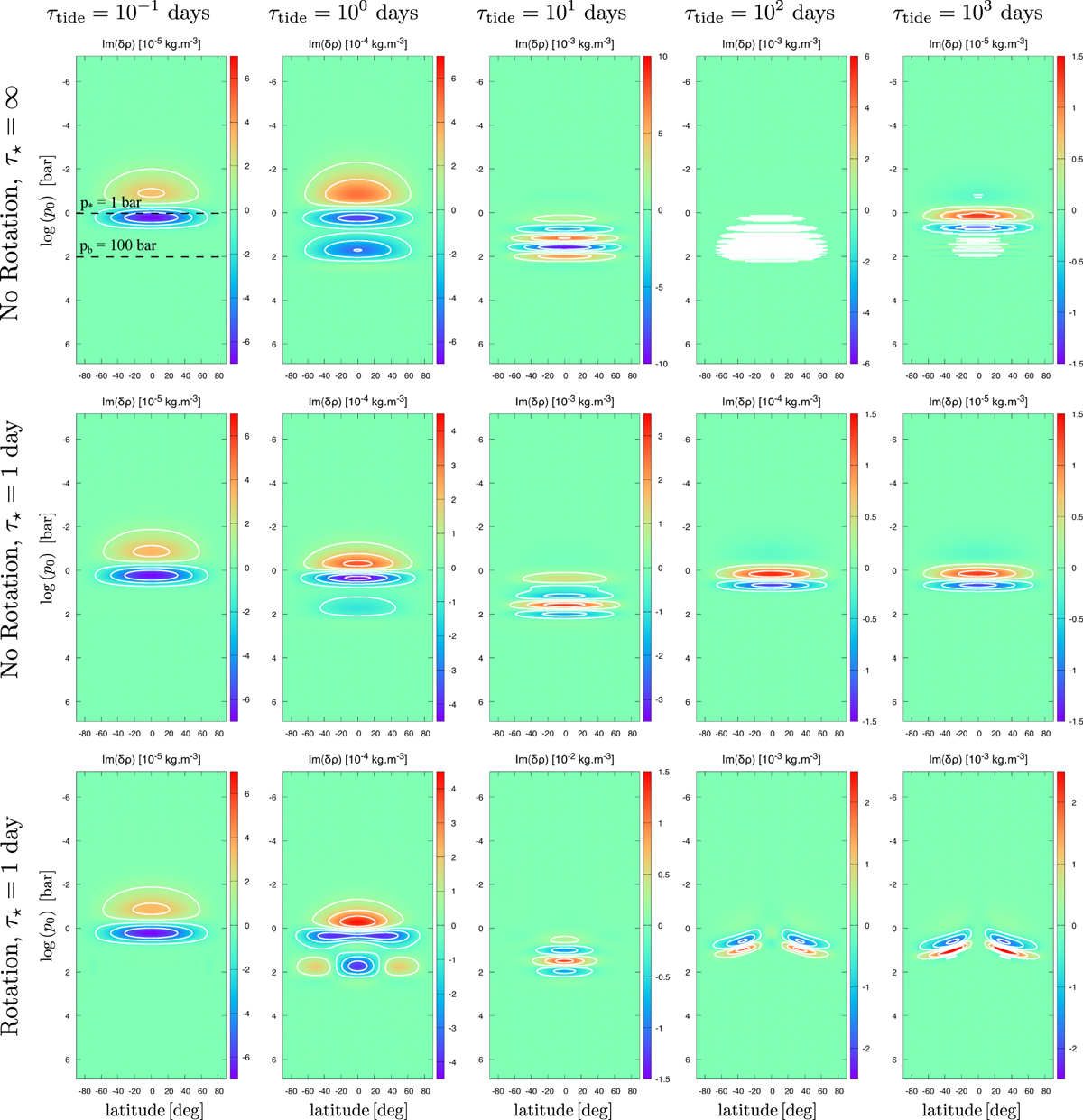Fig. 6

Imaginary part of density fluctuations generated by the quadrupolar semidiurnal thermal tide a functions of the latitude (horizontal axis, degrees) and background pressure in logarithmic scale (vertical axis, bars). Density fluctuations are plotted using Eq. (51) for several decades of the forcing period (τtide = 2π∕σ),
![]() (from left to right), and the three studied cases. Top: case treated by Arras & Socrates (2010), that is, adiabatic without rotation (no-Coriolis approximation). Middle: non-adiabatic without rotation (τ⋆ = 1 day). Bottom: non-adiabatic (τ⋆ = 1 day) with rotation (traditional approximation). The horizontal structure of the tidal response (Eq. (26)) is computed for 250 Hough modes using the spectral method described by Wang et al. (2016), with projections on 375 associated Legendre polynomials. The vertical structure equation (Eq. (41)) is integrated on a regular mesh composed of 1000 points (10 000 points for the case
τ⋆ = +∞) using the implicit fourth order finite differences scheme detailed in Appendix E.
(from left to right), and the three studied cases. Top: case treated by Arras & Socrates (2010), that is, adiabatic without rotation (no-Coriolis approximation). Middle: non-adiabatic without rotation (τ⋆ = 1 day). Bottom: non-adiabatic (τ⋆ = 1 day) with rotation (traditional approximation). The horizontal structure of the tidal response (Eq. (26)) is computed for 250 Hough modes using the spectral method described by Wang et al. (2016), with projections on 375 associated Legendre polynomials. The vertical structure equation (Eq. (41)) is integrated on a regular mesh composed of 1000 points (10 000 points for the case
τ⋆ = +∞) using the implicit fourth order finite differences scheme detailed in Appendix E.
Current usage metrics show cumulative count of Article Views (full-text article views including HTML views, PDF and ePub downloads, according to the available data) and Abstracts Views on Vision4Press platform.
Data correspond to usage on the plateform after 2015. The current usage metrics is available 48-96 hours after online publication and is updated daily on week days.
Initial download of the metrics may take a while.


